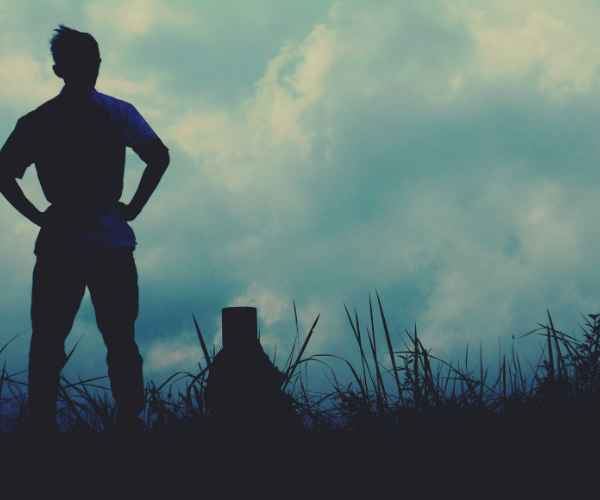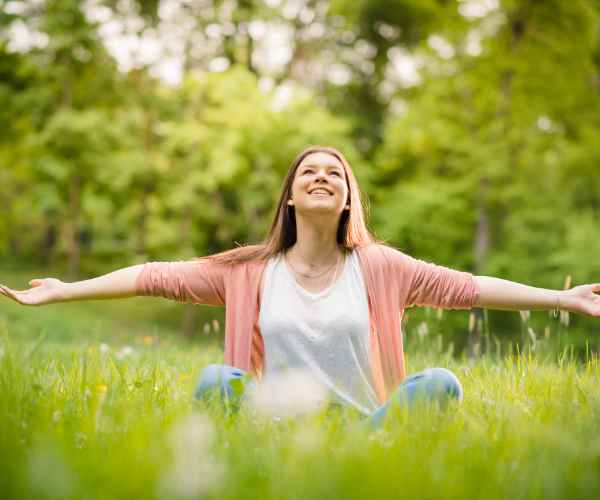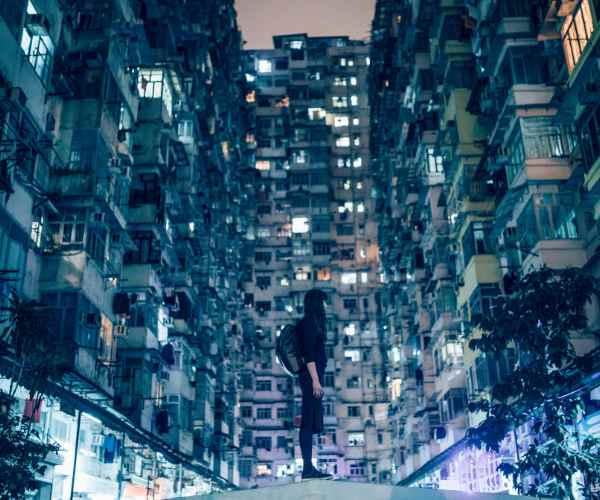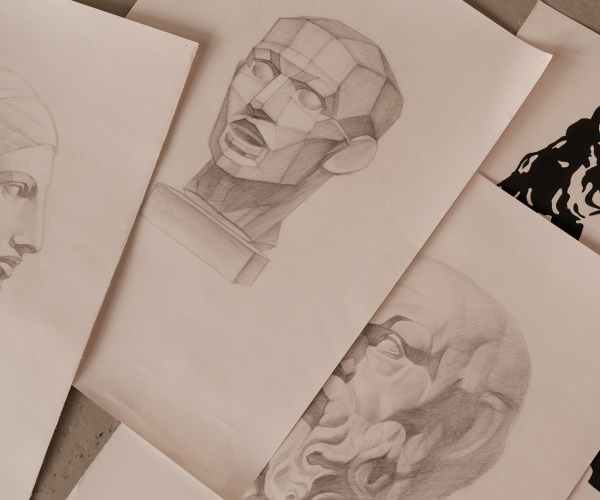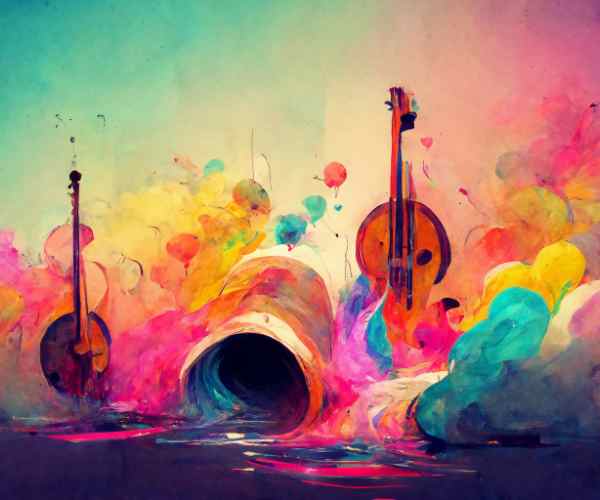Nature works wonders and has the capacity to completely silence us, which is precisely why the connection between nature and artistic creativity has interested artists for centuries.
El Capitan, in Yosemite’s National Park, reminds me of the natural world’s endless capabilities, something that I touched upon earlier. It is that combination—a sense of feeling dwarfed by something larger than oneself and however feeling completely vibrant—that nature incorporates into all the creative work we do. I felt that sense of wonderment that was just begging to be painted or written about for hours on end.
Nature has been a source of inspiration for many and I am not an exception. Tearing through the pages of romantic poetry or leafing through botanical illustrations, nature has always been at the forefront of people’s creative pursuits. It is evident that nature is able to stimulate the right side of one’s brain which is associated with creativity. However, why is that the case? How does nature perspective enhance artistry so profoundly in the first place?
The aim of this post is to scrutinize the nature and art nexus amicably and pinpoint the facets through which imagination is inspired.
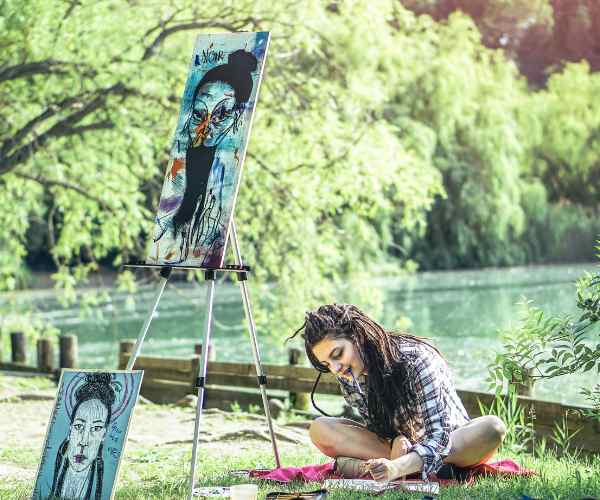
How Nature Shapes Artistic Perspectives
The beauty that nature possesses is able to change the way one sees the world. Such beauty alters one’s mindset and how they would create art. Artists are constantly looking out for nature for inspiration, be it the bright reddish oranges of sunsent or the green hues of a leaf-covered forest. The nature is a constant source of fresh perspective and ideas for artists.
One can look at Claude monet and his Water Lillies collection which embodies perfectly an instance of an artist using nature and engineering it into their artwork. It wasn’t just a random pool. It was Monet’s garden! Monet watched countless hours how the light shifted on top of a pool and how with time the color of the Lillies changed. He wasn’t capturing an object, rather an emotion that nature was trying to portray.
When I recall moments where I went for a hike or spent time at the beach, I feel the urge to make art as I draw inspiration from the scenery that surrounds me. It could be the unique window that the lighting makes with the trees, or the way the wind passes through the grass. It might be difficult, but there’s this sense of nature that you just wish to depict in your art, instead of just sitting still and admiring it.
However, how do these artists portray their feelings of nature in their pieces? It’s all about how they perceive things, and it transforms how they think. When you are in nature for an extended period, you begin to see the minute details — the textures, colors, feelings during different times of the day. All of this really helps in nurturing the art within.
A Way to View Nature for Greater Art:
Nature can act as a form of outlet for one’s artistic creativity. Nature can be used by the artist to reflect how they feel. Picture this, when you are feeling anxious, being in a park or a calm area would serve as a mental restart. In that moment all the ideas which previously felt disrupted would feel clear and attainable with ease.
I believe I am in the right territory whenever I am engaged in a task and happen to feel stuck for ideas. Going out even for a few minutes does wonders with my creative ideas and I come up with what is termed as the Aha moment. There is something about walking, the steady thump of feet on the earth, the whistles and the calls of birds or the array of seasons that inspire creative processes for me.
Georgia O’Keeffe is a classic case of an artist who is able to examine nature keenly and completely transform that nature into a work of beauty. She painted massive flowers, which she did because of the time spent in the desert of New Mexico, and as it would seem, her perspective changed. Rather, she did not simply paint what she saw a flower, which, to everyone’s dismay, changed every perspective. One of her remarks explains that people are missing out on the sheer beauty of the world around them simply because they do not appreciate how creative she views the world. She shows us in her paintings that nature is more than the objects that catch the eye; it is also what we think and feel as we interact with it.
Nature Infused Color, Shape & Form
Speaking of Color, nature in its entirety offers a boundless source of color, shape, and form. Take the patterns found in leaves or consider how a bird’s wings are folded during flight. It appears that nature is serving us with a fresh set of ideas for improvement every day.
To me, envisioning the structure of a tree and its branches and incorporating it in a piece of art is quite fulfilling. Instead of reproducing an object, the goal is to extract a few elements that would appeal to you and employ them in a novel way.
This is exactly how some of the best artists in world history worked. To an artist, the delicate structure of a flower petal or the bends of a river could be flattened into something surreal, amorphous. It is as if nature assembled the basic structure for us and we as artists rearranged it in a way it addressed us personally.
Nature is there with its intrinsic beauty for anyone who has the resolve to ever see, and this alone is the essence of nature. It doesn’t matter if you are a sculptor, photographer or a painter, all you need to do is go outside and let nature inspire you.
The Impact of Nature in Artistic Formulation:
It is easy to think of the landscape, color and texture when we think of artistic creation, however, there’s much more to it. Nature fuels our creative thinking alongside supplying us with visually stunning sights – and the way it incorporates emotions is truly mesmerizing.
I have often escaped into nature; there have been numerous occasions when I had to. One recollection that comes to mind is in college- it was a very stressful time for me and all I needed was to breathe. Instead of actively looking for inspiration, I would visit the nearby botanical gardens for a breathing meditation to feel grounded. And that’s the beauty of nature. The sounds around us fade away and we’re left with the comments of our thoughts, and it is this emotional tranquility that often brings about creative ideas.
Over the years, nature has been the greatest inspiration to artistic minds all around the world. Their focus and objective goes beyond simply observing the painting as they allow nature’s beauty to evoke feelings within them. Silence, whistling winds, and rustling leaves are everything to them and serve as their muse. All the deep ingrained emotional intelligence within them is drawn out and amplified, and that shapes real artistry.
Impact of nature on mood and cotidian enhancement
A more in-depth delve into psychology would bring one to the conclusion that this is all backed by science. Recent research has unearthed the reality that being exposed to greenery and natural elements allows a person to think and feel better. The mind starts functioning in a whole different aspect that leads to creativity. Just picture being locked inside for hours with nothing on the screen and even on your mind; nothing other than pure white space, it feels dull. But stepping outside and going for a short stroll can completely change everything. That is how nature works.
Vincent van Gogh is a very good example of a person associated with high creativity and artistry. While Van Gogh was in the Saint-Paul asylum, he spent a lot of time in the gardens and on the countryside. Being alone along with picturesque scenery offered him serenity, and his artwork displays it too. The painting ‘Starry Night’ is among the works which he made during the time of his stay in the asylum. There is an emotion in that piece as well – you can sense action, there is vibrancy, the feeling of chaos, but also serenity. It’s like nature provides him the emotional release that words can never offer, and he is able to channel it through different forms of art.
I think it is a good case of nature being active in the process of creation instead of just resting in the background. It is capable of deleting mental dust and helping you focus on an art piece that you want to create.
Nature as a Metaphor in Art
Works of many artists include natural metaphors, because they reflect the life cycle of humans consisting of birth, life and death, alongside with renewal. How often do we not turn to nature in search of figuring out how we feel and what we are going through? A good example of this is: nature has the ability to be a medium to our feelings.
Let’s take the transition from one season to another for example. Spring can highlight the meaning of the word beginnings while autumn would correlate to endings or at best the feeling of longing, cycles that had been completed. Artists seldom portray images of a dying tree or the waves of a tumultuary ocean, the trees and the ocean are mere metaphors of a greater theme: the inherent feeling of mortality.
In my work I found that natural elements used as metaphors can help to transmit thoughts that are very difficult to articulate in the precise words. There is a childlike charm about a leaf falling from a tree that can be quite evocative when one is trying to communicate feelings of loss or change, about seasons having to fall. For centuries, artists have embraced it, and that is the reason nature is such an effective medium in visual stories.
Nature As The Muse For Artists
Nature stirred some of the most brilliant masterpieces in history. Some of the greatest artworks were a response to nature. They do not simply try to copy the fucking world through paint, but rather imagine what it would feel like through the bits viewed.
Nature Transcendent During The Romantic Movement
Romantic artists were particularly interested in a natural phenomenon known as the sublime which is defined as the awe inspiring power of nature that is beyond any form of control. Capturing uncontrollable nature, accurately, was the end goal for romantic artists and realistically speaking, there is a thrill in doing just that. They were not looking for the prêt à porter scenes that included encapsulating gardens and other kinds of nature, rather they had their eyes set on storms and wild nature.
In J.M.W Turner, such scenes make the sea vibrate against the walls. You can almost feel the salt in the air and W. Turner’s work would make you want to taste the sea. The type of work Turner did would make the ocean look like it’s alive which would capture anyone whole in an instant. With Turner’s work, it is not about water or the oceans rather it is about nature and how powerful yet exposed Turner made everyone feel.
By embracing nature’s duality, Turner was able to inspire others since that is exactly what art is about, nurturing people and making them realize that life is not about walking on a pink fluffy cloud, the world out there can be cruel too.
Modern and Contemporary Artists Get Their Hands Dirty With Nature
The Romantics were not the last artists to be influenced by Nature. Nature continues to inspire artists through contemporary art how it can be incorporated into work in new ways that can be classified as art.
Consider Andy Goldsworthy, for example—he is renowned for constructing site – specific three – dimensional precarious structures from materials such as stones, leaves and, imagine this, even melted ice. What we should note about his art is that it is ephemeral—he will construct and detail a fond structure with an assortment of sticks and stones, and then the tide just never fails to wash it all out and the winds blow it all apart. Such notions are in a way rather poetic, don’t you think? The notion that art should not always exist in perpetuity and can be as short lived as a sunset.
Indeed, the art of this artist invites us to look at the world differently. He is not an exponent of the frozen nature of the past nor the cultured nature of the future; he is a participant in nature, allowing it’s forces determining the result of the creative process. A strong reminder that sometimes the greatest art isn’t created through artistic design.
General Queries
In what way can nature fuel an artist’s imagination and creativity?
I think what is so inspiring in nature is the fact that it does change, is full of surprises and there are a variety of inspirations to draw from. I’ve discovered that for many artists, it’s not hard to forego the wealth this nature offers with merely stepping out and looking around. It doesn’t have to be always enormous or spectacular, there are times it’s the finer points that have significance. Consider the texture of a tree bark, or the way sunlight pools between leaves or the colors that touch a bird’s feathers. Almost every aspect within the natural world can shape artworks ranging from its color scheme to its diverse and creative configurations. I usually carry along with me a sketchpad, somewhere like Pakistan’s parks or gardens and simply taking the time to observe my surroundings generates fresh thoughts. It’s not about copying what you already see: as I say, it’s about how nature guides you in the progression of your artistic decisions, but in an individual rather than the general way.
How does being in nature assist with creativity? What are the reasons?
Nature tends to alter and influence one’s state of thinking, as if one is hitting the refresh button. Through research and studies, it has been established that spending time in nature not only increases concentration levels but assistance with creativity and reduces stress simultaneously. From personal experience, I can say that when I feel that my creativity has reached a dead end, just stepping outside for a walk does the job—they would begin to flow again. You do not have to force ideas, and simply breathing new fresh air helps allow your mind to roam around. And this is the particular reason — when you are calm, your brain is able to forge unthinkable and creative links. Nature has a calming influence, whether it is the tranquility of the woods or the sound of the waves crashing at the shore, that promotes imaginative processing.
Is Nature Still An Inspiration Even In An Urban Area?
Nature is surrounding us, including those areas that most people would deem as city like, to answer your question, as someone who lives in a particularly intense city, inspiration is everywhere. A small set of trees beside the street, grass patches in the park, light bouncing off the windows of a building during sunset, all of these have a certain beauty to them. I came across a very convenient phenomenon while I was thinking about the trees; all of the shadow patterns that late-afternoon trees made on a brick wall inspired me. Even a rainstorm can spark a range of emotions and ideas — all you must do is remain connected to the planet.
What are some well known works of art influenced by nature?
There are many artists in history who took inspiration from nature. Remember Claude Monet as an illustration. The entire collection of his watercolors is based on the garden he constructed at his house in Giverny. He became increasingly engrossed with the movement of the light that fell on the water, and the changing patterns he observed during the early and late parts of the day. Georgia O’Keeffe is another name that comes to mind. Her imaginative paintings of desert flowers done in close-up shots were revolutionary in every way. Her ties to the great land of New Mexico endowed her work with an unusual location flavor. And what can be said about the superb J. M. W. Turner? His magnificent sea views were more than simply images of the sea; they depicted nature’s immense strength and ever-present element of chance. Such artists are a reminder of the strong relationship that exists between creativity and nature.
Conclusion
Nature and art have a close relation that is not only simple while observing nature or its elements. For example, While trying to capture the vastness of a mountain range, or the fine intricacies comprising a single flower petal, there are these mysterious parts of us that are deep, and may be uncovered by connecting with nature. It serves as a hoard of never ending ideas by always forcing to remember that to be creative or an artist, one has to take things slowly and let the ambience direct them to take the route.
Every time I go out into nature, I feel my frame of thought change. My mind gets filled with ideas, and creativity doesn’t seem too hard to find, Everything comes freely, and there’s no overthinking involved. This only emphasizes that for all venturous artists out there, you can try being a painter, sculptor or photographer, while believing that creativity is more about the emotions than simply the vision. It’s when ideas come alive, and there are many world ideas you couldn’t think of while being indoors that nature can bring in.
This naturally reminds us that the next time were feeling mentally stuck, we simply need to take a deep breath, look at the sky, for the clouds surrounded by blue mountains to trigger the creativity inside them, or simply look outside from the window, reminisce about walking in the park, and focus on the possibilities nature can provide to the individual on their quest to explore their creativity further.

